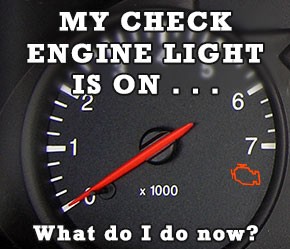You may have recently had a warning light repaired in your car. This could be a check engine/service engine soon light (this is most common), a.b.s., s.r.s, battery or other warning light.
Our intention with this article is to try to answer any questions about your repair, give you a little insight to how the new car systems function, and avoid any misunderstanding or confusion if the light reappears in a short time.
In recent years cars have become more sophisticated, or electrically challenged as we say, and the computer monitors more systems than ever before. We’re talking about everything from knowing if the windows are rolling down to if the gas cap is tight enough, as well as all the major functions that make the car run.
A computer monitor is a complex sensor system that tests (monitors) certain components at specific times while you are driving the car and reports the findings back to the main computer. There is usually a minimum of 5 monitors on all cars, or can be as many as 20 monitors, all testing the car’s systems; it just depends on the system and type of car. Once a monitor is sensing a problem with your car, you guessed it, the warning light comes on.
Here’s where it gets a little tricky; the monitors check different systems at different times. For instance, an evaporative monitor for most cars has to have the gas tank fuel level between ¼ and ¾ then driven at a steady speed no lower than 45 m.p.h. and no more than 65 m.p.h. for one minute. The coolant temperature must be above 200 degrees and the air temperature above 75 degrees; this is a simple system. So, imagine a person who never drives on the freeway. It would be difficult for the computer to check this system.
There is a point, once a check engine light comes on, that it stops monitoring all systems until the broken one is fixed. What I’m trying to say is once a check engine light is repaired and the system starts its monitoring program again, the light may reoccur for a totally different system failure other than the one that was repaired. Depending on your driving habits, it could be a week or even a month before the computer checks all the monitoring systems. If a system fails, that’s right, another check engine light for another reason.
Certified Auto is committed to giving our customers the best service possible. If we have repaired a warning light and it comes back on, we will gladly recheck the codes at no charge to you.
Certified Auto Specialists: the friendlier and more helpful auto shop! Feel free to call 626-963-0814 with any questions and we will be glad to help, or visit our website at CertifiedAutoCa.com




